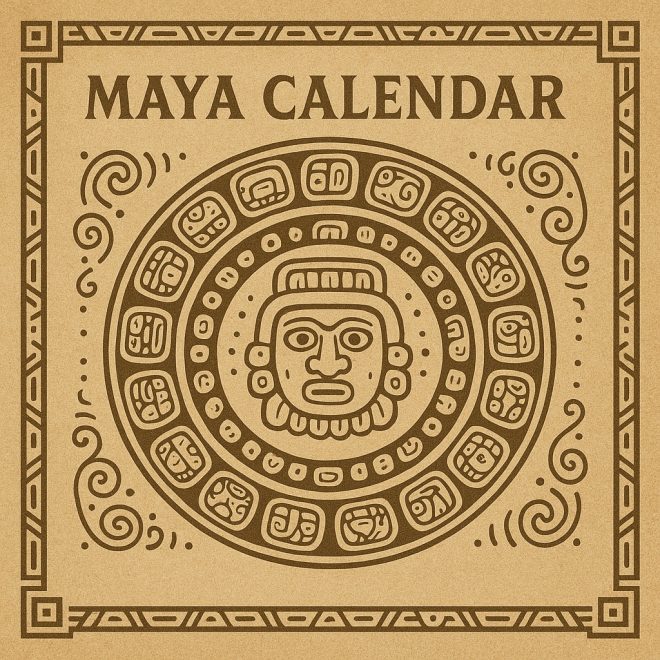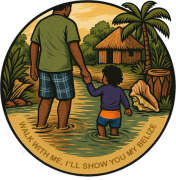The Maya Calendar: Tzolk’in, Haab’, and Sacred Time
Understanding the Maya Calendar
The ancient Maya used three interlocking calendars to organize time:
- The Tzolk’in (260-day ritual calendar)
- The Haab’ (365-day solar year)
- The Long Count (a running tally of days since a mythical creation date)
Each served different functions—from agricultural planning to royal ceremonies—and were central to both daily life and dynastic power.
Quick Summary: The Maya combined a 260-day sacred calendar (Tzolk’in) with a 365-day solar calendar (Haab’) and used the Long Count to track historical events beyond the 52-year cycle.
What Are the Tzolk’in, Haab’, and Long Count?
Tzolk’in (Ritual Calendar – 260 Days)
- Composed of 20 day names and 13 numbers.
- Repeats every 260 days.
- Used to schedule religious ceremonies, naming children, and other sacred functions.
Haab' (Seasonal Calendar – 365 Days)
- 18 months of 20 days each, plus 5 “unlucky” Wayeb’ days.
- Tracks seasonal events and agricultural cycles.
- The Haab’ year begins with 0 Pop.
Try the Maya Resonance Tool — a guide to your spiritual energy based on Maya time.
Long Count (Historical Chronology)
- Counts days from August 11, 3114 BCE (Creation date).
- Used to date monuments and major historical events.
- Units: Kin (1), Uinal (20), Tun (360), Katun (7,200), Baktun (144,000).
How Maya Date Conversion Works
To convert a Maya Long Count date to a Gregorian date, scholars typically use the GMT correlation constant (584283). This allows researchers to line up carved stelae dates with historical moments in Western calendars.

📍 How Belize Fits into the Broader Maya Calendar System
While the Maya calendar system was shared across the ancient Maya world—including present-day Mexico (Yucatán and Chiapas), Guatemala, Belize, and parts of Honduras – the way it was used locally varied by region and city-state.
In Mexico’s great cities like Palenque and Chichén Itzá, the calendar was tied closely to temple alignments and elite rituals. In Guatemala, especially at Tikal and Quiriguá, calendar inscriptions marked dynastic history, war victories, and astronomical events.
Here in Belize, cities like Caracol, Xunantunich, and Lamanai followed the same calendrical cycles, but emphasized local rulers and regional alliances. Many stelae and altars in Belize record Long Count dates alongside the Tzolk’in and Haab’ to tie sacred time to political authority—sometimes referencing events that occurred in Tikal or Calakmul.
So while the calendar system was shared across the Maya world, each region left its own unique imprint—and Belize holds some of the most legible and intact stelae in Mesoamerica.
How the Calendar Was Used in Maya Belize
Political and Ritual Life
Maya city-states in Belize, such as Caracol, Lamanai, and Xunantunich, used these calendars to:
- Time royal accessions, battles, and dedications
- Conduct katun-ending ceremonies (every 20-year period)
- Perform New Fire rituals on Haab’ New Year (0 Pop)
Example: At Caracol, Altar 23 records a victory and uses both the Long Count and Tzolk’in/Haab’ (10 Ahau 8 Zac = Aug 15, 800 CE).
Monument Inscriptions
Most monuments in Belize begin with a Long Count date, followed by the Calendar Round (Tzolk’in + Haab’). This is how Maya kings aligned events with cosmic cycles.
Site-Specific Highlights
Caracol (Western Belize)
- 8 royal altars dedicated at 20-year katun intervals
- Altar 23 = Long Count 9.18.10.0.0 (10 Ahau 8 Zac)
- Incense burner caches found atop Caana pyramid tied to calendrical rites
Lamanai (Northern Belize)
- Stela 9 = 9.9.12.0.0 (7 Ahau 3 Pop)
- Shows accession of ruler Smoking Shell
- Stela art matches calendrical inscription style
Xunantunich (Cayo District)
- Stela 8 = 9.19.10.0.0 (8 Ahau 8 Xul)
- Stela 9 = 10.0.0.0.0 (7 Ahau 18 Sip)
- Panels recounting Caracol events recovered here
Altun Ha (Coastal Belize)
- No dated stelae, but solar deity iconography
- Burial of jade Sun God head (~600 CE)
- Likely used solar alignments instead of inscriptions
✨ Gregorian vs. Maya Long Count Date Table
| Long Count | Tzolk’in | Haab’ | Gregorian Date |
|---|---|---|---|
| 13.0.0.0.0 | 4 Ahau | 3 K’ank’in | December 21, 2012 |
| 9.18.10.0.0 | 10 Ahau | 8 Zac | August 15, 800 CE |
| 9.9.12.0.0 | 7 Ahau | 3 Pop | August 10, 613 CE |
| 9.19.10.0.0 | 8 Ahau | 8 Xul | December 29, 810 CE |
| 10.0.0.0.0 | 7 Ahau | 18 Sip | December 27, 830 CE |
More converters and interactive tools: MayaCalendar.com | FAMSI Date Tool
🔮 Sidebar: What Really Happened in 2012?
Much of the world’s fascination with the Maya calendar peaked in 2012, when the Long Count reached 13.0.0.0.0 — a date equivalent to December 21, 2012. This wasn’t the “end of the world,” as many feared, but rather the end of a Baktun cycle and the beginning of a new era.
In Belize, cultural organizations marked this date with ceremonies, art, and educational events, especially at sites like Santa Rita, Caracol, and Cahal Pech. For the Maya, time is cyclical—not apocalyptic.
Bonus Belize Fact: BC/AD vs. BCE/CE
In Belize, schools traditionally use BC (Before Christ) and AD (Anno Domini) to teach history. However, the international standard—used in archaeology—is BCE (Before Common Era) and CE (Common Era). Both systems refer to the same dates. This subtle difference is a great example of Belize’s unique blend of global and local education.
As a Licensed Belizean Tour Guide...
As a licensed tour guide who explores Maya ruins like Caracol, Lamanai, and Xunantunich regularly, I’ve seen firsthand how ancient timekeeping continues to inspire awe. When I lead guests through Belize’s sacred caves and ceremonial plazas, I often pause to explain the dates carved into stone—some of which haven’t changed in over a thousand years.
FAQs – Maya Calendar in Belize
The Maya used the Tzolk’in, Haab’, and Long Count calendars. These were used across the Maya world, including in Belize.
Yes, cities like Caracol and Lamanai inscribed Long Count dates on monuments, aligning events with cosmic cycles.
These are Tzolk’in and Haab’ day names. For example, 0 Pop marks the first day of the solar year.
Want to Experience Maya Time for Yourself?
Join me on a guided tour to explore the sacred cities of the ancient Maya in Belize. From carved stelae to solar-aligned temples, you’ll discover the living pulse of time in every stone.
📍 Belize With Alvin 📞 (+501) 629-5953 🌐 www.belizewithalvin.com
